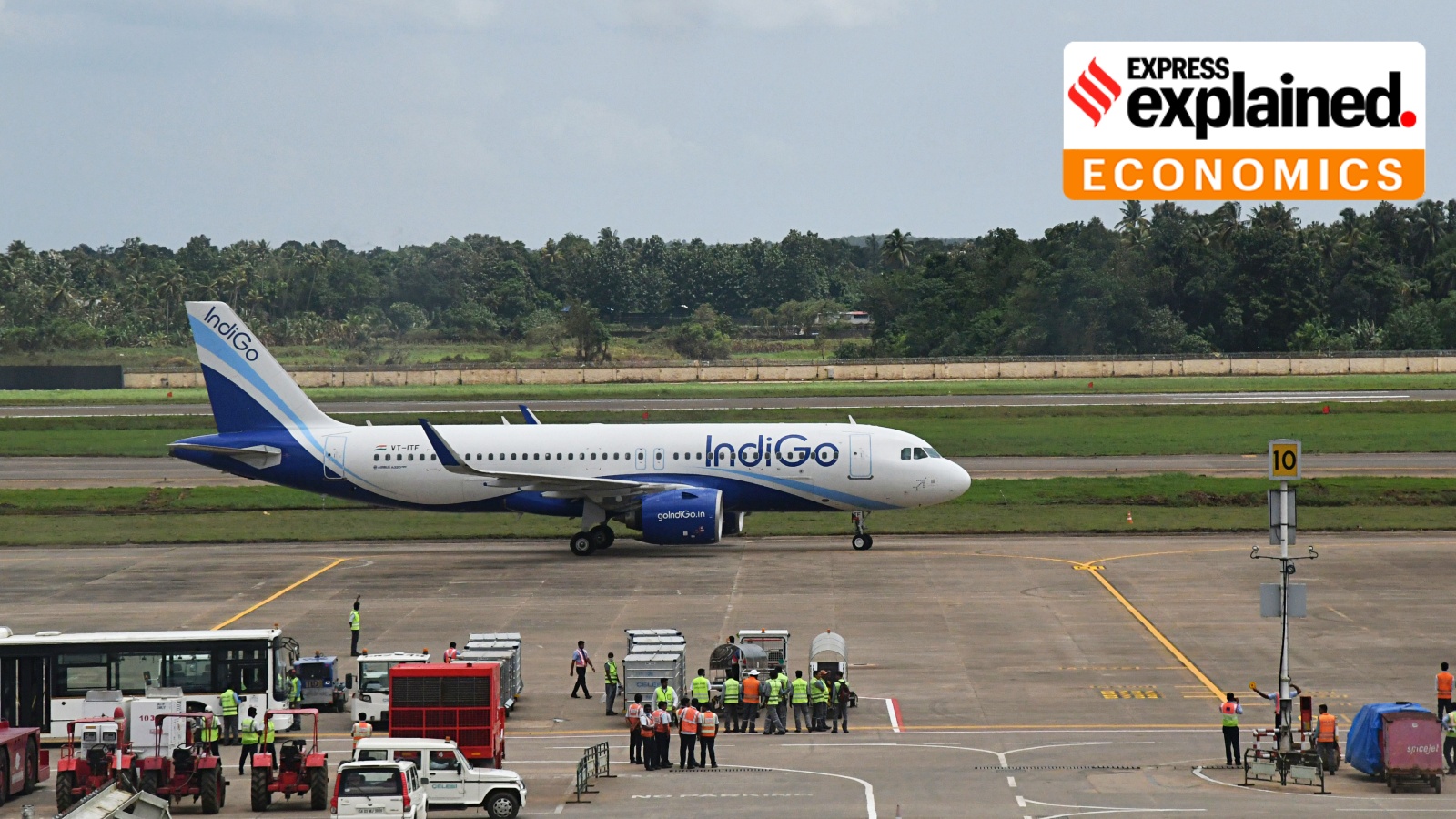Travel
IndiGo’s wide-body aircraft order: What makes long-haul, low-cost air travel a tough nut to crack?

After grabbing headlines last year by placing the world’s largest-ever commercial aircraft order—for 500 Airbus A320 family narrow-body jets—IndiGo again forced the aviation world to sit up and take notice recently by ordering 30 wide-body Airbus A350-900 aircraft, with deliveries slated to start in 2027. Additionally, IndiGo has purchase options for another 70 aircraft of the A350 family.
India’s largest airline, which is also among the biggest budget carriers in the world in terms of passengers flown, has now made its intentions clear with this latest order. After ruling the Indian skies, it is dreaming big to make a mark globally with non-stop, long-haul flights from Indian airports. There is one issue, though.
Even as the low-cost, short-haul model, of which IndiGo is a clear champion, has been mastered by a number of carriers globally, the same cannot be said about the long-haul, low-cost airline model. Many have tried, burnt their fingers, and even shut shop, while some continue to struggle. Numerous failures and few, if at all, relatively stable and profitable long-haul budget airlines underscore the reputation of this segment as the Ultima Thule of commercial aviation.
Wow Air, Norwegian Airlines, Thomas Cook, Air June, XL Airlines, and a number of other carriers failed at the long-haul, low-cost airline model. Some others in the segment, like AirAsia X, have been struggling. While there have been a few profitable long-haul budget operations, including Scoot, Jetstar, Cebu Pacific, Tui, and French Bee, it remains a segment replete with pitfalls and unknowns with more crashes than happy landings.
What makes this segment a largely unconquered frontier, and what can IndiGo do to plant its flag and build a successful long-haul product and network? There are no simple answers, just numerous factors, data points, and business and product philosophies. For years, airlines have been trying to develop recipes for a successful long-haul, low-cost model from these ingredients, but most have failed the taste test. Now IndiGo has its shot at perfecting the secret sauce, if there is one.
The high-cost dilemmas for low-cost carriers
The fundamental business principle of low-cost carriers (LCCs) is, at least theoretically, rather straightforward: minimise costs in order to offer low fares and fill up the aircraft, while still earning a profit. A cost escalation, on the other hand, limits the pricing power of the LCCs, thereby shrinking the gap with full-service carriers (FSCs).
One of the main factors that make it difficult to operate and sustain a low-cost, long-haul operation is the high fuel costs compared to short-haul hops. This means that airlines flying longer routes with larger aircraft have relatively less control over their costs as fuel expenses, which are determined by international oil prices, tend to have a disproportionately high share in the cost structure.
Latest wide-body aircraft like the A350 are more fuel-efficient than earlier generations of planes, but the jury is still out on whether they can really swing the needle in favour of low-cost, long-duration air travel. Operating narrow-body jets is a hallmark of major LCCs globally, but wide-body aircraft themselves are a lot more expensive. And new-generation wide-body planes even more so.
Then there are more costs associated with operating wide-body planes as they require additional manpower—cockpit and cabin crews—due to the sheer lengths of the journey, and rest and fatigue management requirements. Budget carriers thrive on rapid turnaround times and high capacity utilisation levels, and achieving these on a sustained basis in long-haul operations can be challenging. Additionally, maintenance and repair costs for wide-body aircraft tend to be higher and the timelines longer.
Networking skills
Apart from cost efficiency, network planning is the big differentiator when it comes to success and failure in commercial aviation. While it is often an airline’s product and pricing that get the most attention in the public eye, its network strategy and development are fundamental to how it fares operationally and financially. In the case of low-cost, long-haul airlines, the importance of the network design is further accentuated.
An airline’s network design is shaped by a number of factors, including demand and competition, so there is no one winning formula. And while there will be some unique features or peculiarities with every airline’s network, aviation sector experts point to a few common elements in the network designs of some of the relatively successful long-haul, low-cost carriers.
As in the case of successful short-haul LCCs, these elements broadly include operating more routes with few or no competing airlines and with low overall flight frequencies, instead of trying to break into competition-heavy, high-frequency routes. Operating from multiple hubs or points instead of one major hub might be a better network design for LCC operations even in the long-haul segment.
In other words, the global experience with successful LCCs has shown that they tend to perform better financially with point-to-point networks and a focus on serving latent demand and even stimulating it on the not-so-busy routes. And often, they try to fly to and from secondary airports that are cheaper to operate from than large airports.
Of course, there would be exceptions due to factors like demand levels in source markets, fleet strengths, geographical spread of the airline’s home country, airport infrastructure, and domestic and regional aviation markets and regulations, among others.
Low-cost with some frills
The positioning of the low-cost product also matters. A barebones, no-frills product without much comfort and amenities might do the job for shorter flights. But when it comes to long-duration flights, flyers may be reluctant to choose such a product. And sprucing up the aircraft with more amenities, be it charging sockets, more comfortable seats, in-flight entertainment (IFE), and ovens to enable hot meal service, among others, certainly adds to the costs.
Different airlines are applying different solutions and innovations, some of which are not exactly in line with what low-cost airline products have traditionally represented. Many in the industry now term these as hybrid products, which offer a mix of LCC and FSC features.
There are carriers that have introduced dual-class cabins, offering business class or premium economy-like seats and services for a higher price. Some are also offering amenities like in-flight entertainment, power outlets, and hot meals to economy-class passengers either as part of the standard offering or on demand for an additional price.
Some of these airlines are even offering the option of all-inclusive bundled fares, in addition to the standard LCC practice of unbundled fares that require passengers to pay extra for everything from seat selection to luggage allowance to food and drinks on board.
IndiGo’s long-haul flight path
IndiGo has so far not commented on the potential routes on which the A350s will be deployed, their cabin configuration, and the amenities that the airline might offer on its wide-body product. In a recent investor call, IndiGo’s chief executive officer Pieter Elbers said that all options are open and the decisions will be taken in due course based on the evolving requirements of the Indian flyers and the country’s aviation landscape.
With the deliveries of the A350s slated to start in 2027, IndiGo still has time to finalise its network strategy and design, and the long-haul product it wants to offer. While the airline has not divulged details on both counts but there are indications of the broad direction it might take.
On the product front, there are signals that IndiGo could go for a dual-class cabin configuration, something that other successful long-haul LCCs have also done. With some premium economy or business class-like seats complete with a few bundled services—sold for a notably higher price than the regular economy class seats—airlines can earn additional revenue that helps them in offering lower fares to fill up the rest of the cabin. IndiGo currently offers an all-economy cabin on almost all its flights.
With regard to IFE, the airline is already running a trial on the bring-you-own-device (BYOD) basis on the Delhi–Goa route. It would be interesting to see if it will graduate to seat-back screens on its A350s, like Paris-based long-haul LCC French Bee. Will there be charging points on board and will IndiGo finally start offering hot meals? These are among the questions that the airline will perhaps answer closer to its induction of the A350s.
Coming to IndiGo’s plan for its network design, Elbers said that IndiGo would be looking to offer direct international flights from multiple points in India, and not just the top airports of Delhi and Mumbai. This plan appears to be in line with the multi-hub network designs of most of the successful long-haul LCCs. Given the growing demand for international travel and IndiGo’s strong domestic and short-haul international network, this model could serve the airline well in long-haul operations with strong potential for domestic-to-international and even international-to-international connections.
Over the past couple of years, IndiGo has been pushing its international network expansion to the extent it can with its narrow-body fleet. But instead of entering high-competition and busy routes, the airline has focussed on identifying under-served routes and those with latent demand, while also stimulating demand on certain others. This, again, is a strategy that has worked well for a number of LCCs in their long-haul operations, and there are clear indications that IndiGo may persist with it in designing its long-haul network.











